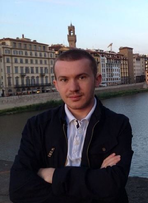 In this thesis, new advanced optical methods are demonstrated that benefit from random light scattering through disordered photonic media. Focusing and high-resolution optical imaging applications are aimed at. ‘Our approach is relatively new,’ says Hasan Yılmaz. ‘New perspectives on fundamental issues arise. The work contributes to high-resolution imaging, a hot topic in science and in industry, and may, most probably, lead to completely new microscopy and metrology techniques.’
In this thesis, new advanced optical methods are demonstrated that benefit from random light scattering through disordered photonic media. Focusing and high-resolution optical imaging applications are aimed at. ‘Our approach is relatively new,’ says Hasan Yılmaz. ‘New perspectives on fundamental issues arise. The work contributes to high-resolution imaging, a hot topic in science and in industry, and may, most probably, lead to completely new microscopy and metrology techniques.’
In his thesis Hasan demonstrates advanced optical methods that enable optical focusing and high-resolution imaging through scattering media. Using a new control scheme of light propagation through scattering media, light can be focused on a very small area even in the presence of experimental noise.
‘This is a good practical result,’ Hasan says. ‘We were also able to calculate fundamental limitations of wavefront shaping experiments, resulting from this new control scheme. We have derived an analytical expression that finds the information-theoretical limitation of focusing through dynamic scattering materials such as clouds, milk, or biological tissue.’
New perspective

Without any control of wavefront of laser light incident on a scattering material, a speckle pattern of randomly positioned dark and bright spots is observed. Although those speckle patterns seem random, they can be scanned deterministically, to compose sharper images of nanostructures compared to a conventional optical imaging system.
This is a new approach on scattering solid immersion lenses which enables sub-100 nm resolution with visible light. ‘The approach is based on random light scattering of scattering materials with high refractive index and computational image processing,’ Hasan says.

‘The papers we published will be of practical importance, I am sure of. In industry great commercial interest exists on building apparatus based on using scattering materials as lenses. The first prototypes for completely new microscopes are ready to be build by some leading companies in the near future.’
Strong point
‘Although my PhD-work is focussed on the application side, a strong theoretical background on light scattering is needed to develop new optical methods. ‘That was the strong point of my thesis work, I believe,’ Hasan says. ‘The practical approach on the design of the experimental set-ups combined with theoretical work led to important results. These were published in The Optical Society (OSA)’s leading journals Biomedical Optics Express and in Optica.’
Future plans
In the six months following his defence, Hasan will be working as a postdoctoral researcher within his MESA+group: Complex Photonic Systems. During his post-doc, he will finalize some more results to be published in other high-ranked journals.
‘Working at MESA+ is time-saving,’ he claims. ‘Because of the equipment available and the knowledge people are likely to share with you, problems can be solved efficiently. Nearly always experts can be found nearby to help you out.’
After this post-doc he will be working as a postdoctoral associate at Yale University in the United States. Hasan: ‘I prefer an academic career, being a good chance to gain and generate new knowledge without economic worries such as profit centred research businesses. My ultimate goal is to start a research group that pursuits curiosity driven research. That is my main drive.’
